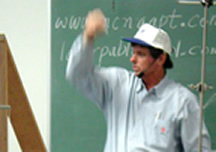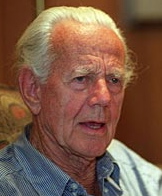

|
The Fall 2005 MeetingNorthern California/Nevada Section AAPTCalifornia State University ChicoFriday & Saturday,
|
Meeting Theme:
|
 |
Local Host: Phil GashClick Here for maps, driving directions, hotels, etc
|

|
PTRA Workshop: Friday, 10 AM–4:30 PM |
Ranking Tasks for Physics and TIPERSCancelled, alas, for low enrollment. Go to the Friday Evening Social! |
Friday Evening Social |
Friday evening Nov 4, 2005
|
Saturday Morning, November 5, 2005Ayers Hall 120 |
7:45 Registration, Coffee, Donuts, and other culinary delights.What a deal! The fee is waived for first-time attendees and students! The rest of us pay only $15. A bargain at twice the price! 8:45 Welcome and Announcements9:00 Show & TellShare your favorite demonstration or teaching tip. Since new teachers and section members will be at this meeting, you are encouraged to dust off some of your oldies but goodies. If you have handouts, please bring 75 copies. Time limit is 5 minutes per person. 10:00 Invited Speaker: "This is Your Universe"John Dobson 11:00 Invited Speaker: "Rare Earth"Don Brownlee 12:00 LUNCH: To be announced 1:30 Raffle/Business Meeting: Get informed on Section news and other cool stuff. Paul Robinson will give a Section Rep report on the new meeting models currently under consideration by the national AAPT. |
Afternoon Program: Contributed Papers |
2:00
|
The TOPScience program (that's Teaching Opportunities for Partners in
Science) trains retired scientists and engineers to work in partnership with
teachers to present science in elementary schools. The program provides
class-size kits of materials for hands-on activities which meet the
standards of the Science Framework for California Public Schools, and trains
both scientists and teachers to use them. A Lead Teacher at the school is
the focal point for coordination and scheduling. The nominal time
commitment for the scientist is two hours per week for the school year, but
schedules are flexible. More information on TOPS is available at
http://www.edserv.sjcoe.net/tops
(NB: this site has been sporadic Oct-Nov 2005) |
|
2:20
Claudia Winkler | I prepared a Flash animation to explain relativity to the layman for the occasion of the 2005 Year of Physics. The process of taking a relatively hard concept and trying to make it as simple as possible through animation was extraordinarily enriching. As science teachers we know how hard it is to explain difficult concepts to our students. We enlist different teaching strategies in our instruction such as lecturing, guided explorations, formal lab activities, and webquest. I will demonstrate how Flash provides another vehicle for differentiated instruction. | |
2:40
|
In 1879 Josef Stefan established experimentally that the energy density of electromagnetic radiation
within a cavity (blackbody radiation) was proportional to the fourth power of temperature of the cavity walls.
In 1884 Ludwig Boltzmann proposed a theoretical model to account for this temperature dependence.
While most physicists are quite familiar with the Stefan-Boltzmann law,
Hmmm… how did Boltzmann do it? This talk will focus on answering this question. |
|
3:00
|
Nicolas Copernicus was able to determine the relative distance from the Sun to each of the planets known in his day. In that spirit, it is possible to use digital photometry to determine the distance to a star in Astronomical Units using some rather naïve assumptions. This is something that you can do with your students once they understand that the light from a point source diminishes as the inverse square of the distance. | |
3:20
|
Recently certain companies have begun the practice of selling beverages in aluminum bottles. Sources have claimed that these bottles would allow said beverages to cool down more quickly and (in violation of the Laws of Thermodynamics) to stay cold longer. We used controlled conditions to compare the cooling times of glass bottles vs. aluminum bottles. A theoretical model will presented to explain the results of the lab work. | |
3:40
|
Many teachers reduce their lab-grading chores by scoring only one lab write-up per group. But how can you make sure all students are working to the best of their ability on the lab task and write-up? How can you keep students from segregating themselves into groups of “haves” and “have-nots” in terms of aptitude? Heterogeneous lab groups have worked for me. I will show how to create and manage mixed-ability lab groups in a high school physics course, and the educational benefits of doing so. | |
4:00
|
An intriguing oscillatory system can be created using small magnets fixed on the edge of parallel rotating planes. This investigation began by examining the behavior of such an oscillator constructed with "Geomag" magnetic toys. In attempting to model the system, a simplified version of the problem was considered: two magnetic dipoles separated along a common axis of rotation. The observed effect is an oscillation in velocity between the sections of the toy. The theoretical model's predictions were compared to data collected from this oscillator apparatus and match surprisingly well. | |
End of meeting |
Upcoming Events |
PTSOS News |
|
|
Winter AAPT National Meeting Spring NCNAAPT Section Meeting Summer AAPT National Meeting Fall NCNAAPT Section Meeting Spring NCNAAPT Section Meeting |
Attention New Physics Teachers! Check Out PTSOS! PTSOS is an NCNAAPT-sponsored project funded by a donation from the Karl Brown Foundation, that assists physics teachers in their vulnerable first years of teaching. PTSOS is headed by Paul Robinson, Dean Baird, Stephanie Finander. The next round of workshops will begin next fall. New teachers should email Stephanie Finander at sfinander@aol.com for more information on how to get signed up for next year's program now. See also: http://www.ptsos.org |
  
|
Updated November 2, 2005
 John Dobson, creator of the "Dobsonian" telescope mount,
co-founder of the
John Dobson, creator of the "Dobsonian" telescope mount,
co-founder of the
 My colleague Peter Ward and I sought to challenge
the widespread notion that complex,
even intelligent life is common in the universe.
In 1974, Drake and Sagan postulated a million civilizations
may exist in the Milky Way galaxy alone.
We did not think that credible, and put forth an alternative theory,
the Rare Earth Hypothesis,
using information gathered over the years in paleontology,
geology, climatology, and astronomy.
A number of important physical factors will be discussed
including plate techtonics, the Moon,
a stable Jupiter at the right distance from Earth to clean up comets,
and some unique events in Earth's history,
such as Snowball Earth episodes and the Cambrian Explosion,
vital events in the evolution of life that might be very unlikely
to occur on an alien planet. Thus life is very common in the universe,
perhaps more common than even Drake and Sagan anticipated,
while complex life—animals and higher plants—is quite rare.
My colleague Peter Ward and I sought to challenge
the widespread notion that complex,
even intelligent life is common in the universe.
In 1974, Drake and Sagan postulated a million civilizations
may exist in the Milky Way galaxy alone.
We did not think that credible, and put forth an alternative theory,
the Rare Earth Hypothesis,
using information gathered over the years in paleontology,
geology, climatology, and astronomy.
A number of important physical factors will be discussed
including plate techtonics, the Moon,
a stable Jupiter at the right distance from Earth to clean up comets,
and some unique events in Earth's history,
such as Snowball Earth episodes and the Cambrian Explosion,
vital events in the evolution of life that might be very unlikely
to occur on an alien planet. Thus life is very common in the universe,
perhaps more common than even Drake and Sagan anticipated,
while complex life—animals and higher plants—is quite rare.